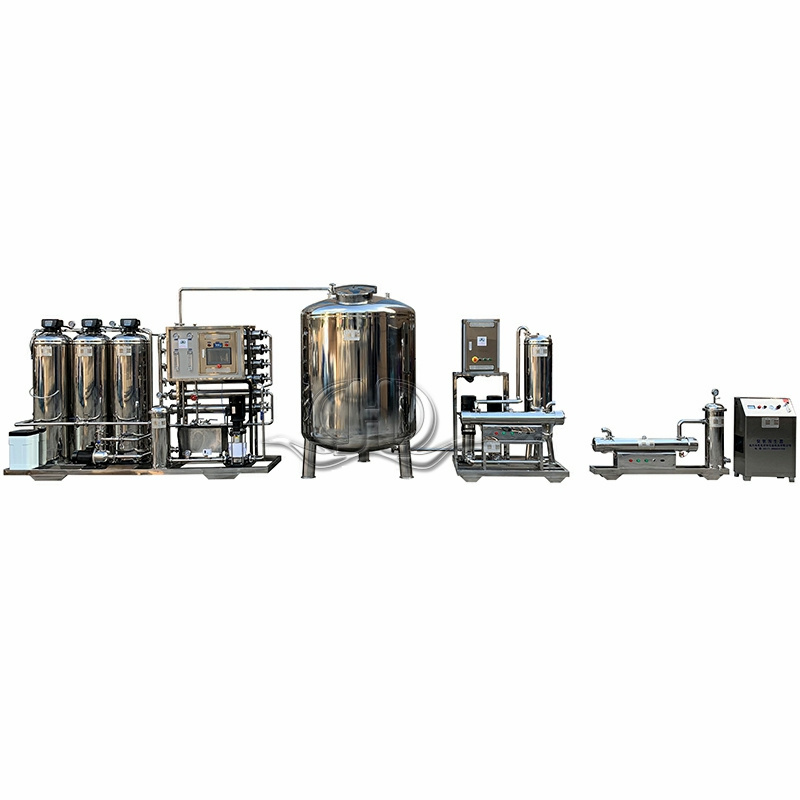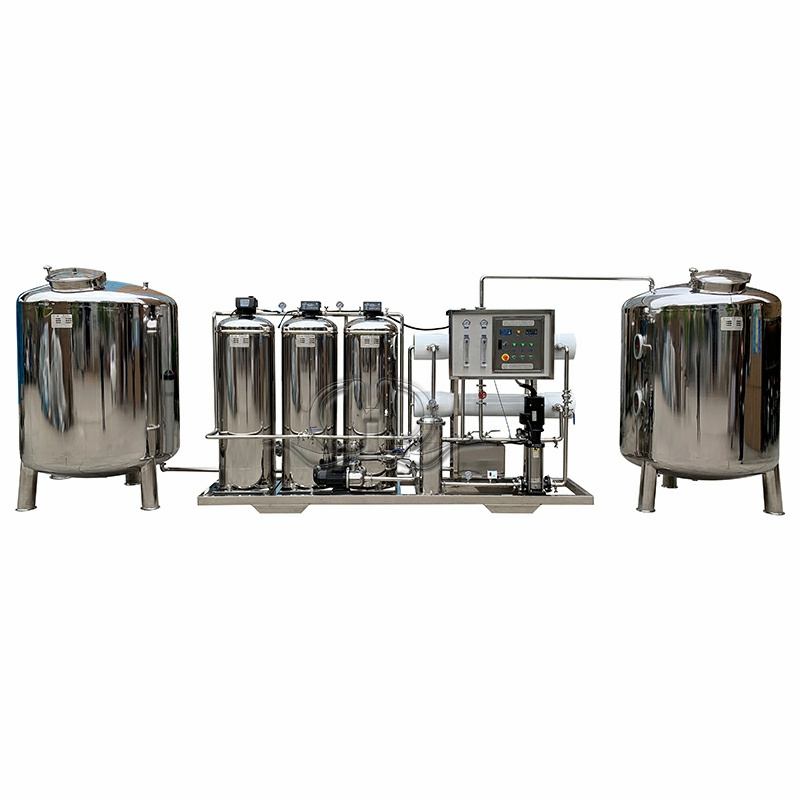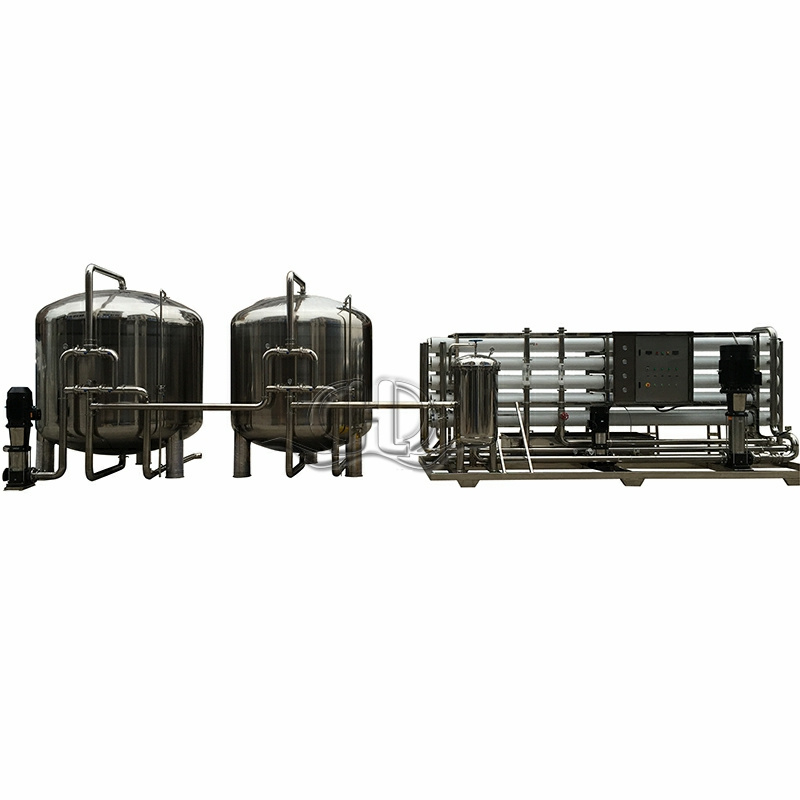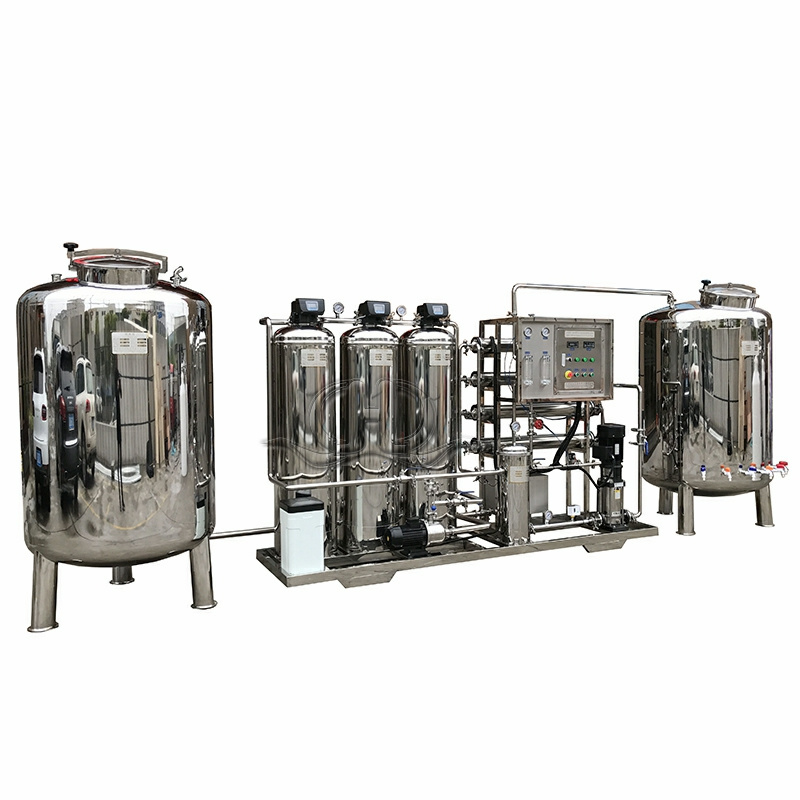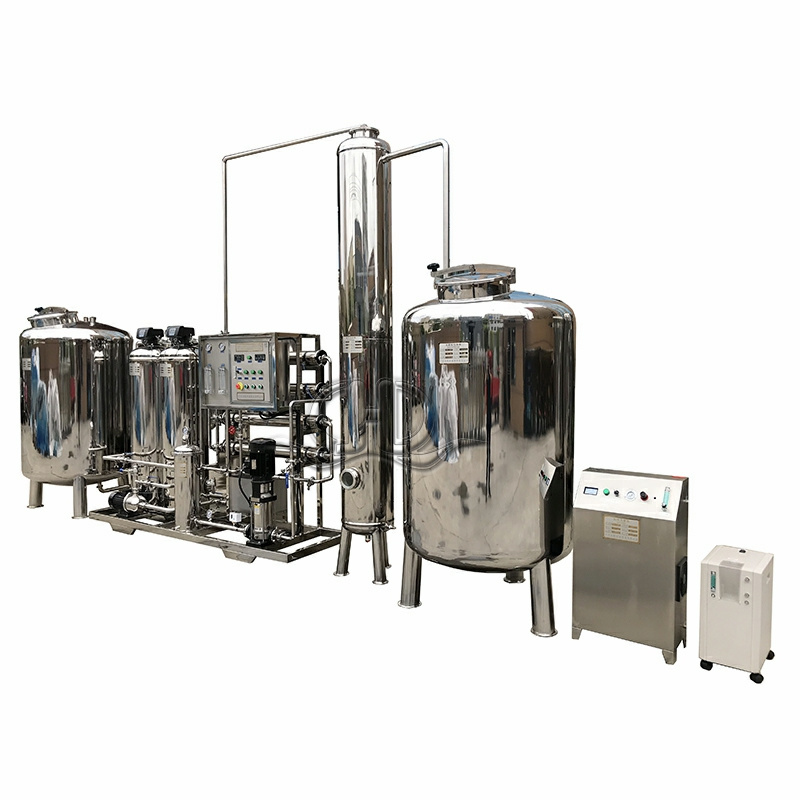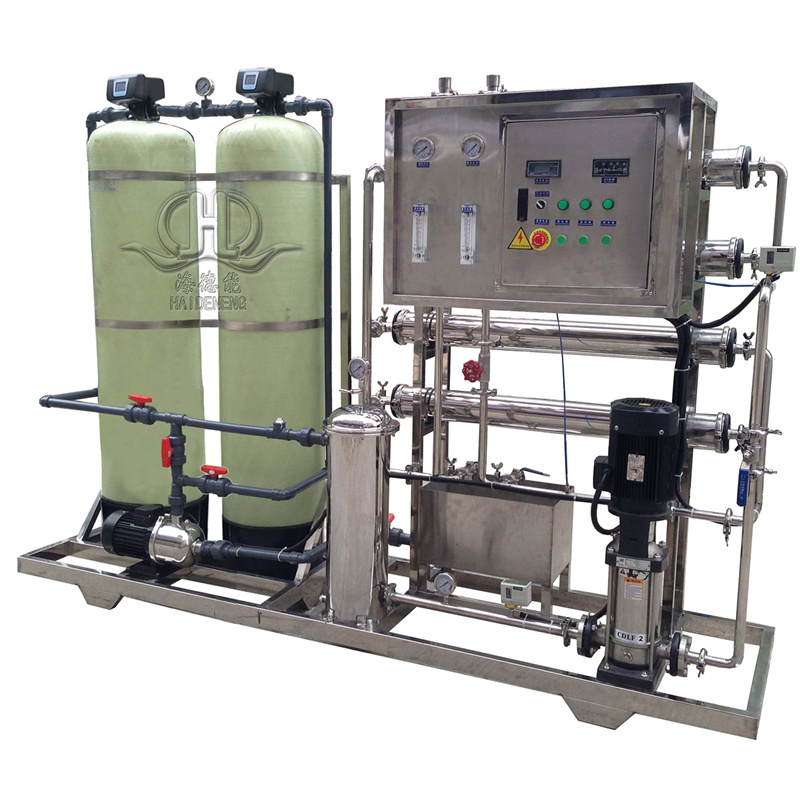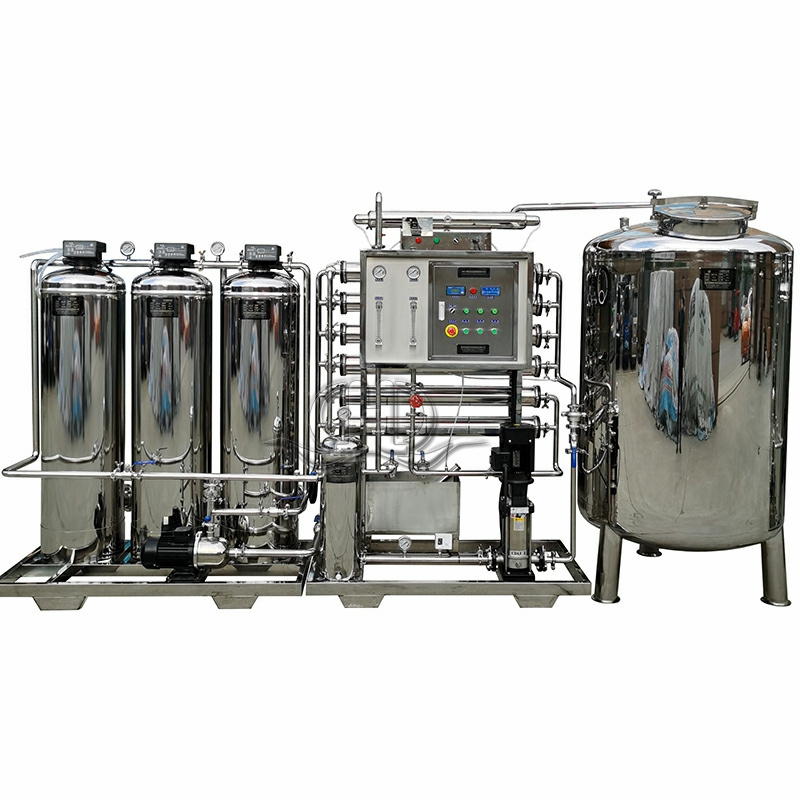Reverse Osmosis water treatment filter for direct drinking
|
Product Detail |
|||||
|
1 |
Inlet water Type |
Well water/ underground water |
Outlet water Type |
Purified Water |
|
|
2 |
Inlet water TDS |
Below 2000ppm |
Desalination rate |
98%-99% |
|
|
3 |
Inlet Water Pressure |
0.2-04mpa |
Outlet water Usage |
Coating material production |
|
|
4 |
Inlet Membrane Water SDI |
≤5 |
Inlet Membrane Water COD |
≤3mg/L |
|
|
5 |
Inlet Water temperature |
2-45℃ |
Outlet capacity |
500-100000 litre per hour |
|
|
Technical Parameters |
|||||
|
1 |
Raw Water Pump |
0.75KW |
SS304 |
||
|
2 |
Pre-treatment part |
Runxin automatic valve/ stainless steel 304 Tank |
SS304 |
||
|
3 |
High pressure Pump |
2.2KW |
SS304 |
||
|
4 |
RO Membrane |
Membrane 0.0001micron pore size desalination rate 99%, recovery rate 50%-60% |
Polyamide |
||
|
5 |
Electrical control system |
Air switch, electrical relay, alternating current contactor switch, control box |
|||
|
6 |
Frame and Pipe Line |
SS304 and DN25 |
|||
|
Function Parts |
|||||
|
NO |
Name |
Description |
Purifying Accuracy |
||
|
1 |
Quartz Sand Filter |
reducing turbidity, suspended matter, organic matter,colloid etc. |
100um |
||
|
2 |
Activated carbon filter |
remove the color,free chlorine, organic matter, harmful matter etc. |
100um |
||
|
3 |
Cation softener |
reducing water total hardness, make water soft and tasty |
100um |
||
|
4 |
Pp filter cartridge |
prevent large particles, bacteria,viruses into ro membranes, remove particles, colloids, organic impurities, heavy metal ions |
5 Micron |
||
|
5 |
Reverse osmosis membrane |
bacteria, virus, heat source etc. harmful substance and 99% dissolved salts. |
0.0001um |
||
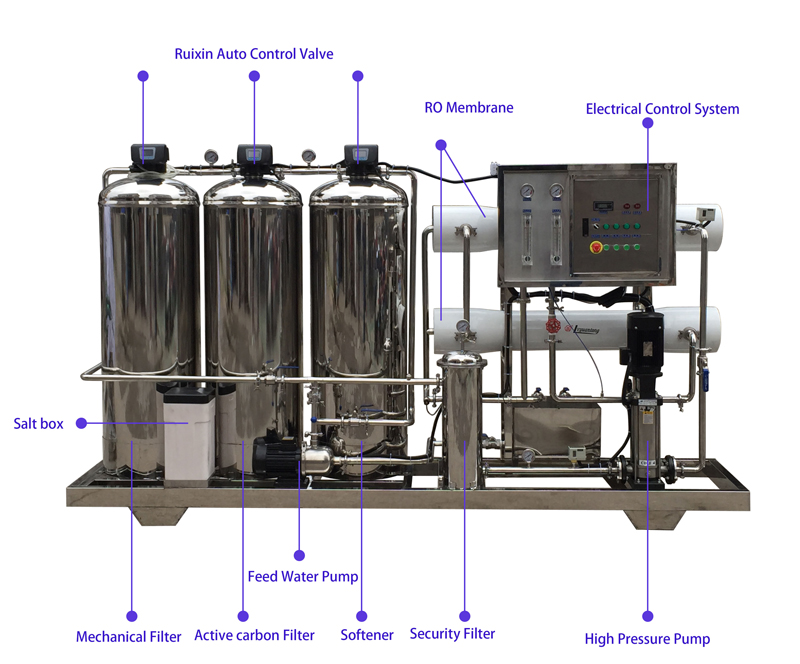
Processing: Feed water Tank→feed water pump→quartz sand filter→active carbon filter→softener→security filter→High pressure Pump→reverse osmosis system→pure water Tank
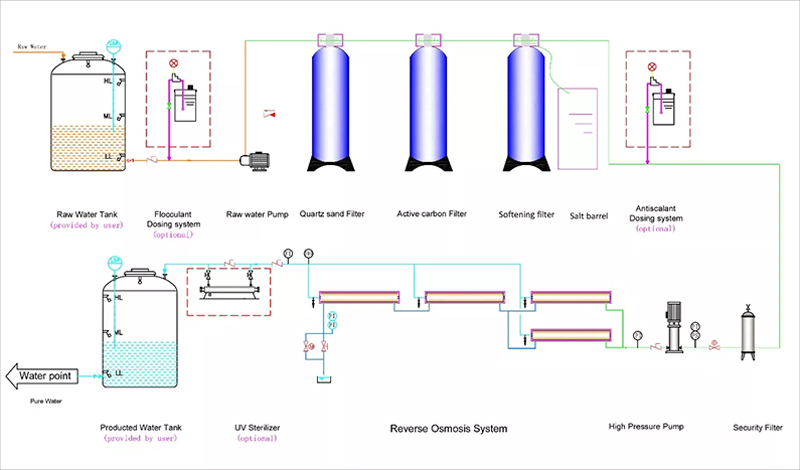
Frequency Constant Pressure Water Supply System function
The function of a frequency constant pressure water supply system is to regulate and maintain a constant pressure in a water distribution system. This system utilizes a variable frequency drive (VFD) to control the speed of the pump motor and adjust the flow rate accordingly to maintain a consistent pressure throughout the system.The system works by monitoring the pressure at different points in the system and comparing it to a set point. If the pressure drops below the desired level, the VFD increases the speed of the pump, increasing the flow rate and restoring the pressure. Conversely, if the pressure exceeds the set point, the VFD reduces the speed of the pump, decreasing the flow rate and maintaining a steady pressure.This constant pressure control ensures that the water supply remains consistent and reliable, even when there are fluctuations in demand or varying supply conditions. It also helps to prevent pressure surges and water hammer, which can damage pipes and fittings in the system.Overall, the frequency constant pressure water supply system helps to optimize water distribution, improve efficiency, and provide a reliable water supply to consumers.
Difference between Home UF Ultrafiltration Water Purifier and RO Reverse Osmosis Water Purification Machine
As people’s living standards improve, the popularity of household water purification devices is also increasing. Currently, most water purifiers on the market are either reverse osmosis (RO) or ultrafiltration (UF) water purification products, as they have better water purification efficiency and cost-effectiveness, making them suitable for home use. The differences between these two types of water treatment equipment are as follows:
1. The water quality of RO reverse osmosis water purification is pure
In reality, the structures of UF and reverse osmosis water purifiers are similar. They are both equipped with PP cotton, activated carbon and other coarse filtering elements in the upper part, and the difference lies in the filtering ability of the ultrafiltration membrane and reverse osmosis. The filtration accuracy of the ultrafiltration water purifier is about 0.01-0.1 microns, while the filtration accuracy of the reverse osmosis membrane can reach 0.0001 microns. This is like comparing sieve sizes, where a smaller sieve size has higher filtration accuracy.
In terms of filtering effect, the ultrafiltration water purifier can remove rust, sediment, chlorine, odor, bacteria, viruses, etc. from the water, while the reverse osmosis water purifier can further remove heavy metal substances (such as mercury, lead, copper, zinc, inorganic arsenic). However, the calcium and magnesium ions required by the human body are also discharged with the wastewater.
2. RO reverse osmosis water purification machine needs electricity
The reverse osmosis water purifier achieves the reverse movement of pure water against natural diffusion by increasing the osmotic pressure. It requires high water pressure to “push” the water, and since the tap water pressure in China is relatively low, RO reverse osmosis water purifiers need to be connected to the main power supply for normal operation. However, don’t worry, the booster pump only works when the water purifier is in use, and the power consumption is relatively low.
The ultrafiltration water purifier is a physical type of filtering. The ultrafiltration water purifier can filter and purify water under standard water pressure, usually without pressure. In addition, some ultrafiltration water purifiers use a single filter element filter, which has a lower space occupied and installation requirements.
3. The water output of the ultrafiltration water purifier is larger
Without pressure, the RO reverse osmosis water purifier may not even produce pure water for you, as its fine filtering structure will greatly reduce water flow. The more water the RO membrane filters, the higher the water output. For example, the water output of a general 500G RO machine is 1.3 liters per minute. However, ultrafiltration water purifiers do not need to worry about flow problems. Their water output is generally 1.5 liters per minute.
4. RO reverse osmosis water purifier has a waste water rate
Because some residual substances (such as calcium carbonate, calcium sulfate, silicon) will deposit on the outer surface of the RO membrane, in order to prevent the RO membrane from becoming clogged, the RO membrane needs to be constantly rinsed with water. Therefore, to obtain pure and healthy water, you must sacrifice a certain proportion of wastewater. Usually, the wastewater rate of ultrafiltration water purifiers is very low, but remember to replace the water purifier filter element regularly.
5. Different applicable ranges of the two types of water purifiers
If your home is in a harsh environment or has severe water pollution, please choose an RO reverse osmosis water purifier. Its purification effect is very good and thorough, its filtration accuracy is very high, only allowing water molecules to pass through, and it can effectively remove rust, sediment, large molecular organic matter, heavy metals, bacteria and viruses from the water, producing pure water. However, since the RO water purifier requires electricity and consumes more water, the cost will be higher. If the water quality is not too poor, a food-grade ultrafiltration water purifier will suffice. The ultrafiltration water purifier can remove rust, sediment, large molecular organic matter, bacteria, viruses, and so on, through pure physical filtration, without electricity, and only requires sufficient tap water pressure.


